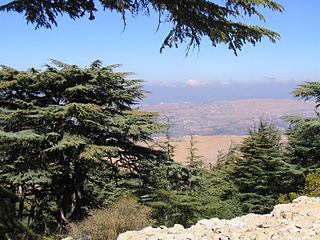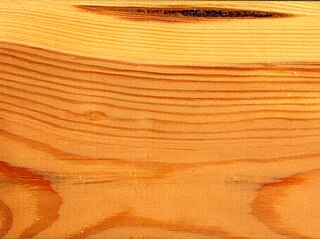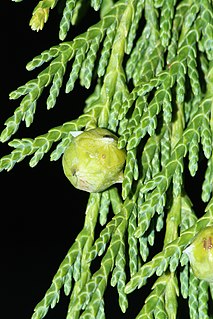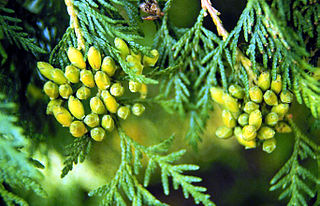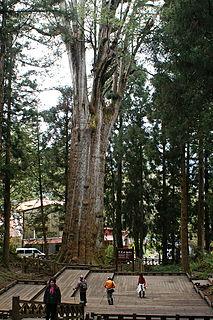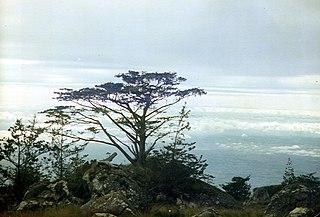This article does not cite any sources .(June 2019) (Learn how and when to remove this template message) |
Cedar wood comes from several different trees known as cedars that grow in different parts of the world, and may have different uses.
- Atlantic white cedar, from Chamaecyparis thyoides , used for building, fences, and shingles.
- California incense-cedar, from Calocedrus decurrens , is the primary type of wood used for making pencils
- Taiwan incense-cedar, comes from Calocedrus formosana , an endangered species that has been over-harvested for its fragrant decay-resistant wood
- Chinese incense-cedar, comes from Calocedrus macrolepis , which has been over-harvested for its fragrant decay-resistant wood
- Cigar-box cedar or Spanish cedar, from Cedrela odorata , is fragrant, insect-repellent, and light-weight, primarily used to protect clothing from insects
- Cedar from Cedrus , was once an important timber in the Mediterranean area, specially in Mount Lebanon, used for building and shipbuilding, but severely overexploited for thousands of years.
- Port Orford cedar, from the western North American tree Chamaecyparis lawsoniana , is light-weight and durable, used for arrow shafts and particularly valued in east Asia
- Japanese cedar, from Cryptomeria japonica , is a light-weight wood used for indoor house-building
- Mexican white cedar from Cupressus lusitanica , comes from a drought-resistant tree that has been widely cultivated for its timber for centuries
- Eastern red cedar from Juniperus virginiana , is soft, red, fine-grained, fragrant, and decay-resistant, often used for fence posts
- Ceylon cedar from Melia azedarach , is a high-quality timber that resembles Burmese teak
- Western red cedar from Thuja plicata , is soft red-brown, aromatic, decay and insect resistant, primarily used for outdoor construction, fences, shingles, and guitar-making
- Northern white cedar from Thuja occidentalis , comes from a relatively small tree, and is used for canoe-making, log cabins, fences, and shingles
- Australian red cedar from Toona ciliata , is red, highly valued, and easy to work, used for furniture-making and shipbuilding

Chamaecyparis thyoides, a species of Cupressaceae, is native to the Atlantic coast of North America and is found from southern Maine to Georgia and along the Gulf of Mexico coast from Florida to Mississippi. It is one of two species of Chamaecyparis found in North America. C. thyoides resides on the East Coast and C. lawsoniana can be found on the West Coast. There are two geographically isolated subspecies, treated by some botanists as distinct species, by others at just varietal rank: Chamaecyparis thyoides thyoides and Chamaecyparis thyoides henryae (H.L.Li) E.Murray The species grows in forested wetlands where they tend to dominate the canopy. The trees are associated with a wide variety of other wetland species because of their wide north-south range. The remaining populations are now found mostly in remote locations that would be difficult to harvest, so its popularity as a source of lumber has decreased.
Wood shingles are thin, tapered pieces of wood primarily used to cover roofs and walls of buildings to protect them from the weather. Historically shingles were split from straight grained, knot free bolts of wood. Today shingles are mostly made by being cut which distinguishes them from shakes which are made by being split out of a bolt.
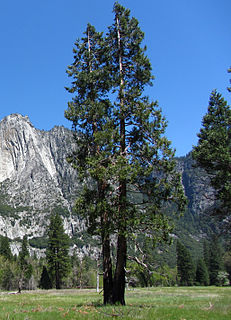
Calocedrus decurrens, with the common names incense cedar and California incense-cedar, is a species of conifer native to western North America, with the bulk of the range in the United States, from central western Oregon through most of California and the extreme west of Nevada, and also a short distance into northwest Mexico in northern Baja California. It grows at altitudes of 50–2,900 metres (160–9,510 ft). It is the most widely known species in the genus, and is often simply called 'incense cedar' without the regional qualifier.
